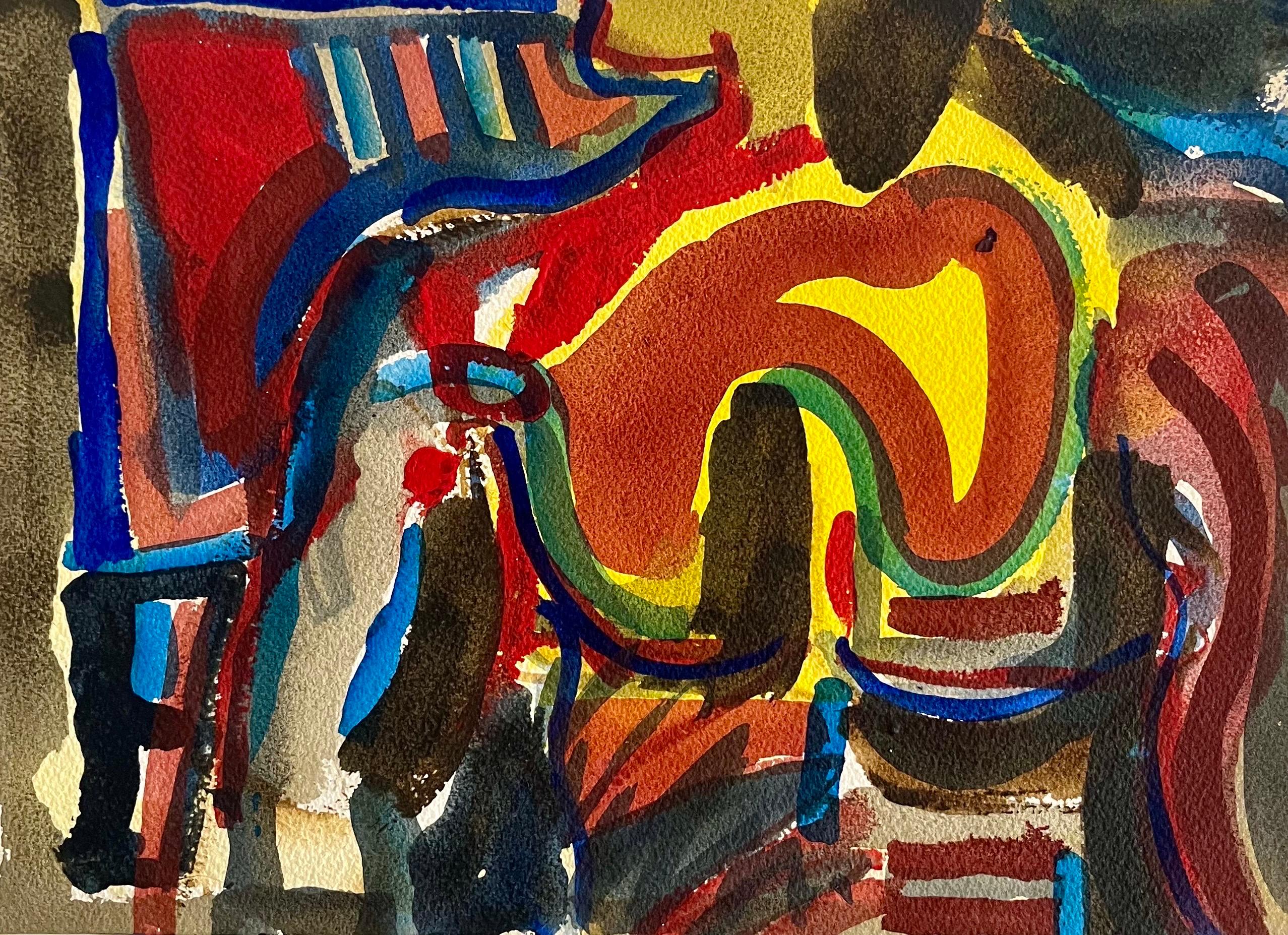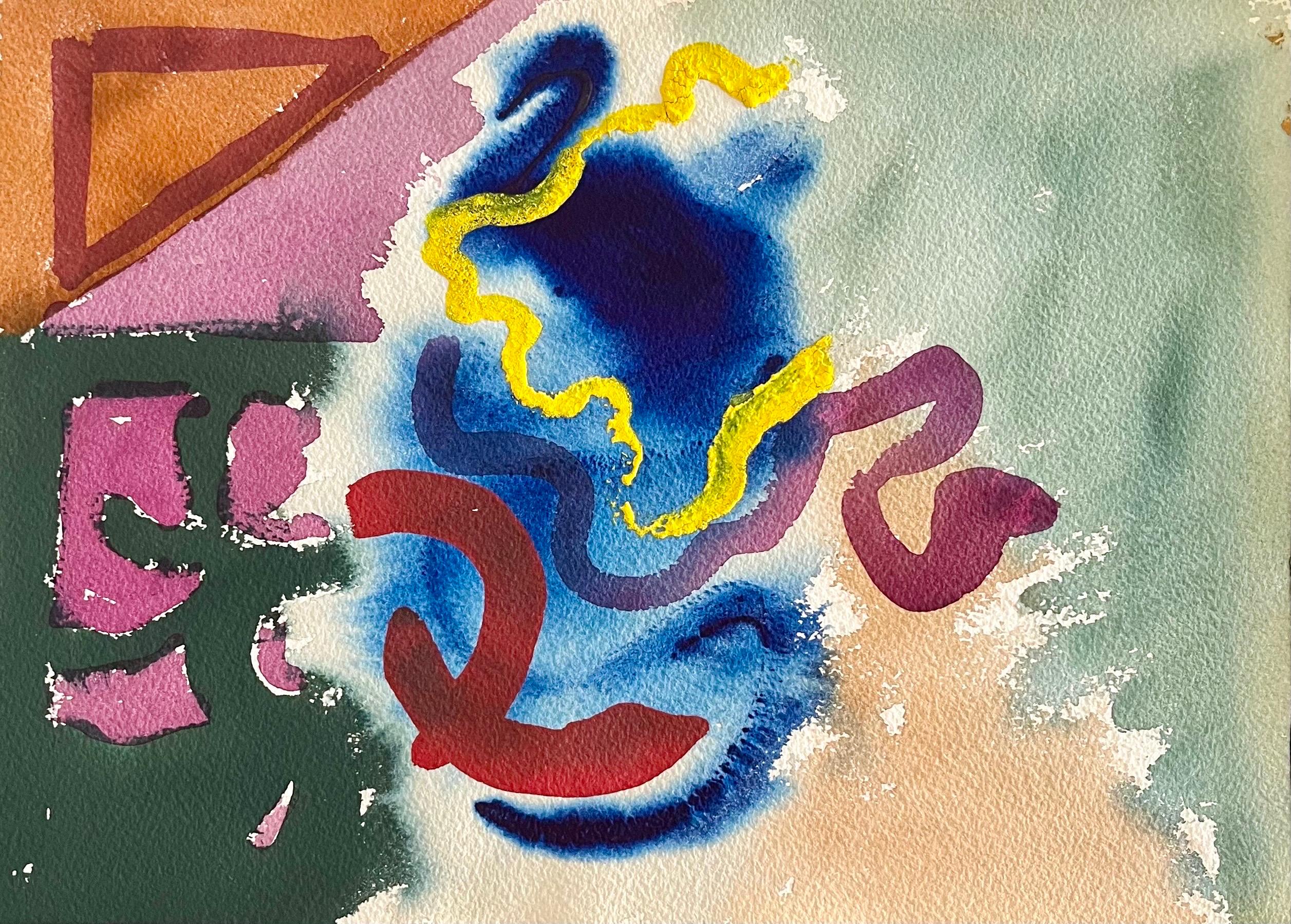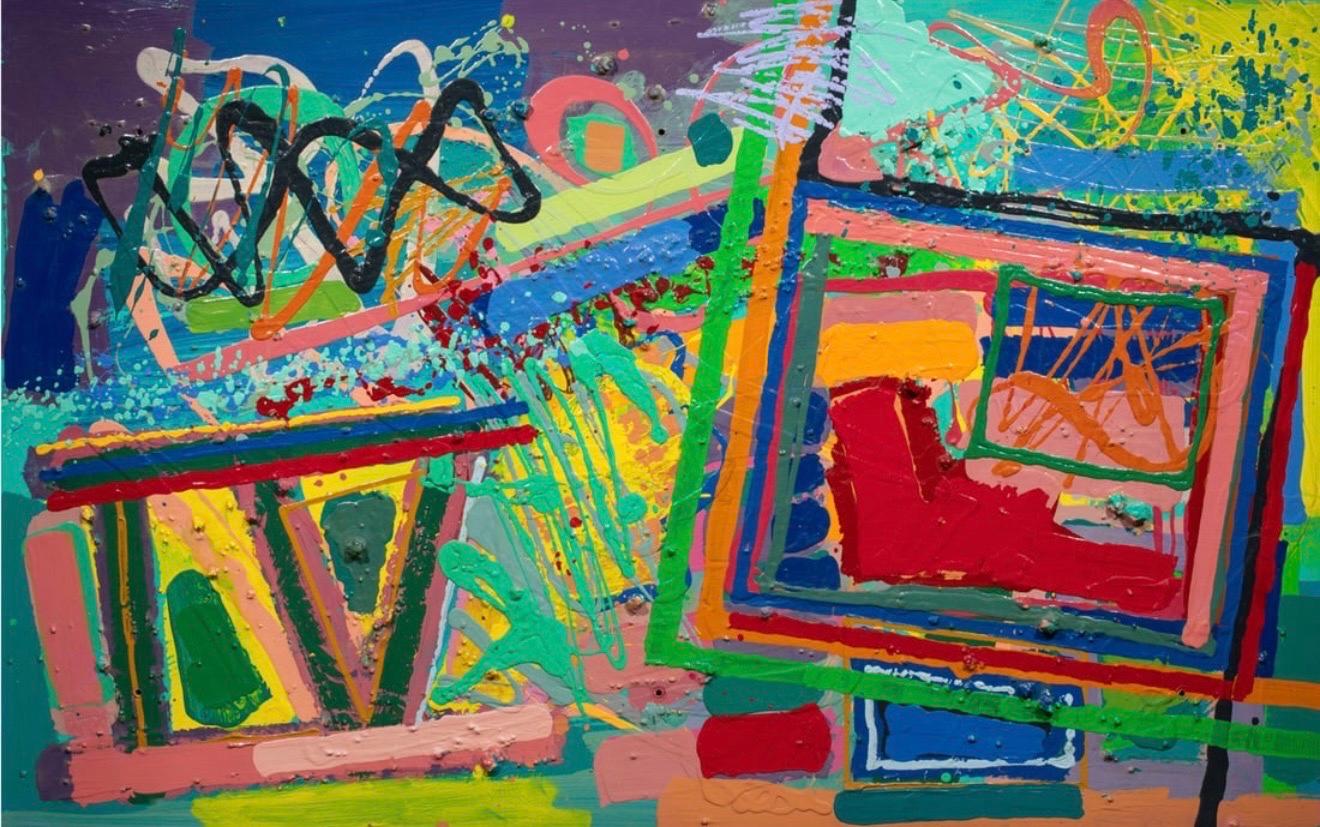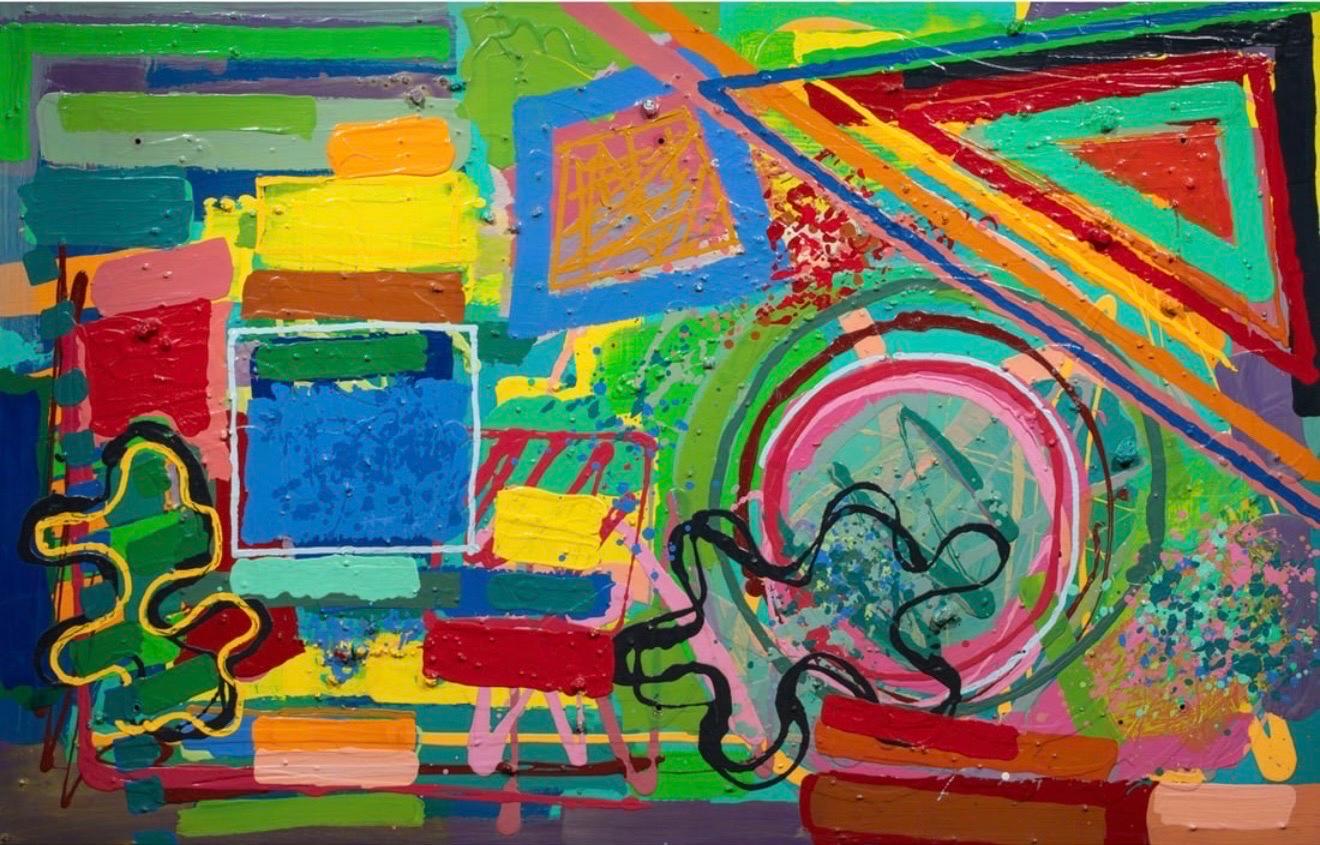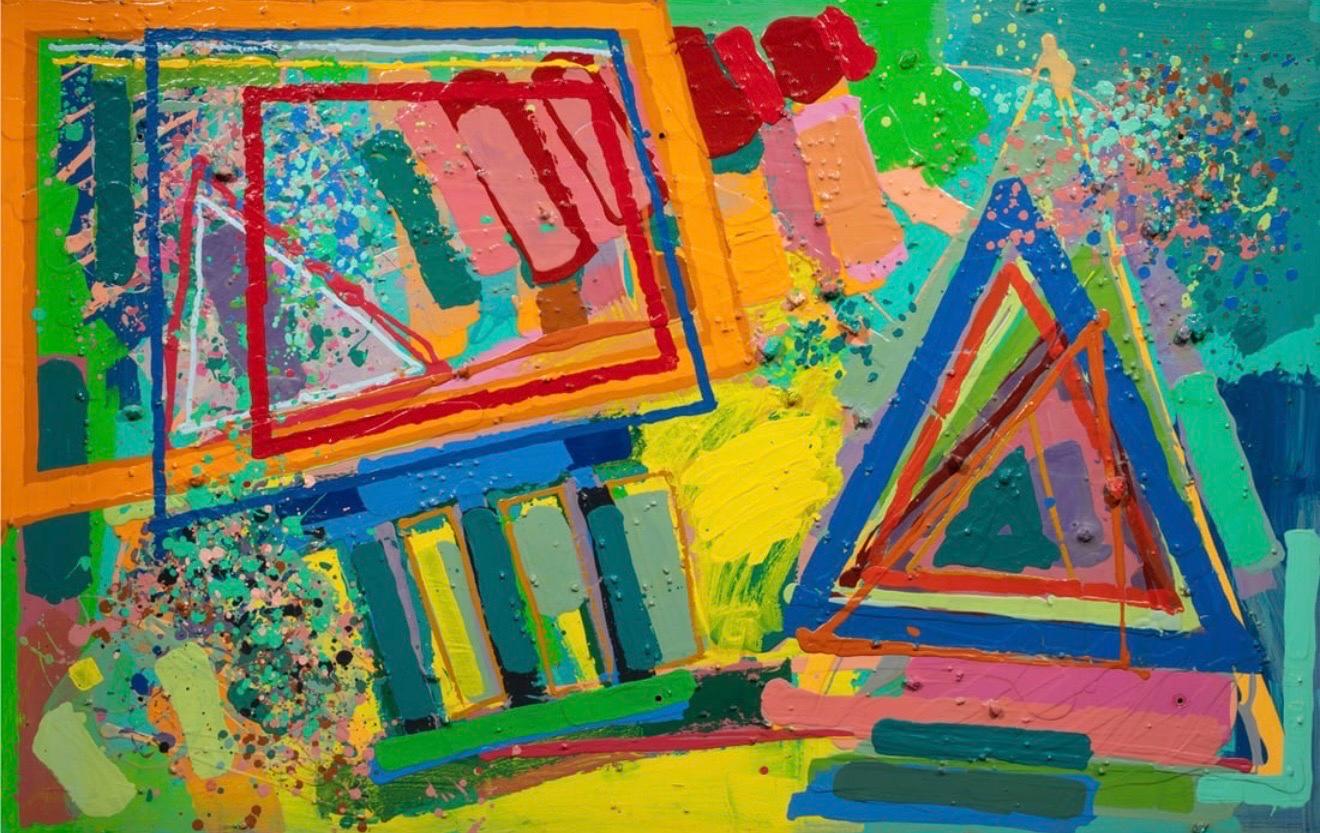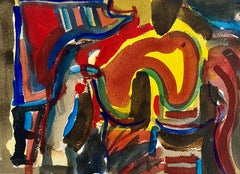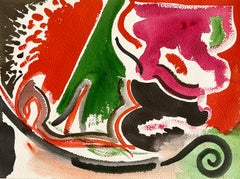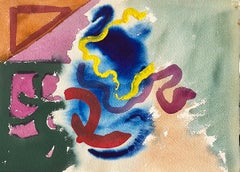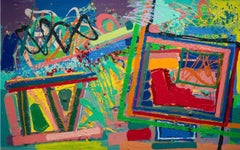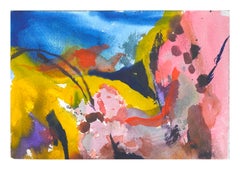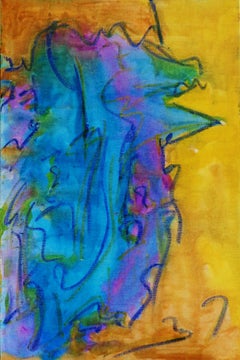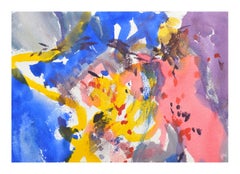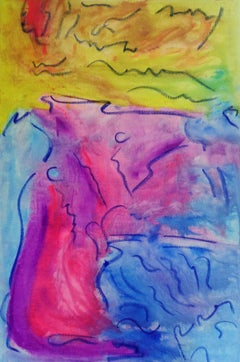Items Similar to Mod Abstract Expressionist Modernist Edward Avedisian Color Field Art Gouache
Want more images or videos?
Request additional images or videos from the seller
1 of 9
Edward AvedisianMod Abstract Expressionist Modernist Edward Avedisian Color Field Art Gouachec. 1979
c. 1979
$950
£724.05
€827.64
CA$1,336.59
A$1,464.19
CHF 770.69
MX$17,475.53
NOK 9,824.40
SEK 8,980.98
DKK 6,182.32
About the Item
Edward Avedisian Gouache Watercolor Abstract Painting on Arches paper. (notebook cover not included)
Unsigned, (bears name verso in pencil.)
Dimensions: 10" X 14"
Late 1970s, early 1980s.
Edward Avedisian (June 15, 1936, Lowell, Massachusetts – August 17, 2007, Philmont, New York) was an American abstract painter who came into prominence during the 1960s. His work was initially associated with Color field painting and in the late 1960s with Lyrical Abstraction and Abstract Expressionism.
He studied art at the School of the Museum of Fine Arts, Boston. By the late 1950s he moved to New York City. Between 1958 and 1963 Avedisian had six solo shows in New York. In 1958 he initially showed at the Hansa Gallery, then he had three shows at the Tibor de Nagy Gallery and in 1962 and 1963 at the Robert Elkon Gallery. He continued to show at the Robert Elkon Gallery almost every year until 1975.
During the 1960s his work was broadly visible in the contemporary art world. He joined the dynamic art scene in Greenwich Village, frequenting the Cedar Tavern on Tenth Street, associating with the critic Clement Greenberg, and joining a new generation of abstract artists, such as Darby Bannard, Kenneth Noland, Jules Olitski, and Larry Poons.
Avedisian was among the leading figures to emerge in the New York art world during the 1960s. An artist who mixed the hot colors of Pop Art with the cool, more analytical qualities of Color Field painting, he was instrumental in the exploration of new abstract methods to examine the primacy of optical experience.
One of his paintings was appeared on the cover of Artforum, in 1969, his work was included in the 1965 Op Art The Responsive Eye exhibition at the Museum of Modern Art and in four annuals at the Whitney Museum of American Art. His paintings were widely sought after by collectors and acquired by major museums in New York and elsewhere. He has been exhibited in prominent galleries, such as the Anita Shapolsky Gallery and the Berry Campbell Gallery in New York City. Edward Avedisian was known for his brightly colored, boldly composed canvases that combined Minimalism's rigor, Pop art exuberance and the saturated tones of Color Field painting.
Roberta Smith of the NYT writes of Avedesian: "Edward Avedisian helped establish the hotly colored, but emotionally cool, abstract painting that succeeded Abstract Expressionism in the early 1960s. This young luminary harnessed elements of minimalism, pop, and color field painting to create prominent works of epic proportions that energized the New York art scene of the time." In 1996 Avedisian showed his paintings from the 1960s at the Mitchell Algus Gallery, then in SoHo. His last show, dominated by recent landscapes, was in 2003 at the Algus gallery, now in Chelsea.
Selected Exhibitions:
Op Art: The Responsive Eye, at the Museum of Modern Art,
Whitney Museum’s Young America 1965
Expo 67, held in Montreal, Canada.
Six Painters (along with Darby Bannard, Dan Christensen, Ron Davis, Poons, and Peter Young) , Albright-Knox Art Gallery in collaboration with the Baltimore Museum of Art and the Milwaukee Art Center.
Selected collections:
Albright-Knox Art Gallery, Buffalo, New York;
Brooklyn Museum, New York;
Denver Art Museum, Colorado;
Flint Institute of Arts, Michigan;
Metropolitan Museum of Art, New York;
Neuberger Museum of Art, Purchase, New York;
Parrish Art Museum, Southampton, New York;
Portland Art Museum, Oregon;
Smithsonian American Art Museum, Washington, D.C.;
Solomon R. Guggenheim Museum, New York;
University of Michigan Museum of Art, Ann Arbor;
Yale University Art Gallery, New Haven, Connecticut.
Museum of Modern Art,
Whitney Museum of American Art,
Berkshire Museum, Pittsfield, Massachusetts,
Wadsworth Atheneum, Hartford, Connecticut,
Los Angeles County Museum of Art, LACMA,
- Creator:Edward Avedisian (1936-2007, American)
- Creation Year:c. 1979
- Dimensions:Height: 10 in (25.4 cm)Width: 14 in (35.56 cm)
- Medium:
- Movement & Style:
- Period:
- Condition:please see photos.
- Gallery Location:Surfside, FL
- Reference Number:1stDibs: LU38214521942
About the Seller
4.9
Platinum Seller
Premium sellers with a 4.7+ rating and 24-hour response times
Established in 1995
1stDibs seller since 2014
1,846 sales on 1stDibs
Typical response time: 1 hour
- ShippingRetrieving quote...Shipping from: Surfside, FL
- Return Policy
More From This Seller
View AllMod Abstract Expressionist Modernist Edward Avedisian Color Field Art Gouache
By Edward Avedisian
Located in Surfside, FL
Edward Avedisian Gouache Watercolor Abstract Painting on Arches paper. (notebook cover not included)
Unsigned, (bears name verso in pencil.)
Dimensions: 10" X 14"
Late 1970s, early 1...
Category
1970s Abstract Expressionist Abstract Paintings
Materials
Watercolor, Gouache
Mod Abstract Expressionist Modernist Edward Avedisian Color Field Art Gouache
By Edward Avedisian
Located in Surfside, FL
Edward Avedisian Gouache Watercolor Abstract Painting on Arches paper. (notebook cover not included)
Unsigned, (bears name verso in pencil.)
Dimensions: 10" X 14"
Late 1970s, early 1...
Category
1970s Abstract Expressionist Abstract Paintings
Materials
Watercolor, Gouache
Mod Abstract Expressionist Modernist Edward Avedisian Color Field Art Gouache
By Edward Avedisian
Located in Surfside, FL
Edward Avedisian Gouache Watercolor Abstract Painting on Arches paper. (notebook cover not included)
Unsigned, (bears name verso in pencil.)
Dimensions: 10" X 14"
Late 1970s, early ...
Category
1970s Abstract Expressionist Abstract Paintings
Materials
Watercolor, Gouache
Large Mod Abstract Expressionist Modernist Edward Avedisian Color Field Painting
By Edward Avedisian
Located in Surfside, FL
Edward Avedisian (American, 1936-2007)
Abstract Large Painting
Acrylic on panel heavily textured with a 3D effect.
Dimensions: 48"h x 75"w
Circa late 1970s, early 1980s
Provenance: ...
Category
1970s Abstract Expressionist Abstract Paintings
Materials
Acrylic, Wood Panel
Large Mod Abstract Expressionist Modernist Edward Avedisian Color Field Painting
By Edward Avedisian
Located in Surfside, FL
Edward Avedisian (American, 1936-2007)
Abstract Large Painting
Acrylic on panel heavily textured with a 3D effect.
Dimensions: 48"h x 75"w
Circa late 1970s, early 1980s
Provenance: ...
Category
1970s Abstract Expressionist Abstract Paintings
Materials
Acrylic, Wood Panel
Large Mod Abstract Expressionist Modernist Edward Avedisian Color Field Painting
By Edward Avedisian
Located in Surfside, FL
Edward Avedisian (American, 1936-2007)
Abstract Large Painting
Acrylic on panel heavily textured with a 3D effect.
Dimensions: 48"h x 75"w
Circa late 1970s, early 1980s
Provenance: ...
Category
1970s Abstract Expressionist Abstract Paintings
Materials
Acrylic, Wood Panel
You May Also Like
Colorful Abstract Watercolor
By Les Anderson
Located in Soquel, CA
Abstract watercolor with bold, dynamic colors by Les (Leslie Luverne) Anderson (American, 1928-2009). From the estate of Les Anderson in Monterey, California. Unsigned and unframed. ...
Category
1980s Abstract Expressionist Abstract Drawings and Watercolors
Materials
Paper, Watercolor
Abstract #43, Original Acrylic Painting, 2017
Located in Boston, MA
Abstract #43, Original Acrylic Painting, 2017
30" x 20" x 1.5" (HxWxD)
Unframed, but comes "cloth-edged" (black) and ready to display with hanging wire
Artist Commentary:
From my gr...
Category
21st Century and Contemporary Abstract Abstract Paintings
Materials
Acrylic, Gouache
Colorful Abstract Watercolor
By Les Anderson
Located in Soquel, CA
Abstract watercolor with bold, dynamic colors by Les (Leslie Luverne) Anderson (American, 1928-2009). From the estate of Les Anderson in Monterey, California. Unsigned and unframed. ...
Category
1980s Abstract Expressionist Abstract Drawings and Watercolors
Materials
Paper, Watercolor
Abstract #46, Abstract Acrylic Painting, 2017
Located in Boston, MA
Abstract #46, Abstract Acrylic Painting, 2017
36" x 24" x 1.5" (HxWxD)
Unframed, but comes "cloth-edged" (black) and ready to display with hanging wire
Artist Commentary:
This piece...
Category
21st Century and Contemporary Abstract Abstract Paintings
Materials
Acrylic, Gouache
Colorful Abstract Watercolor
By Les Anderson
Located in Soquel, CA
Abstract multicolor watercolor with softly blended color fields by Les (Leslie Luverne) Anderson (American, 1928-2009). From the estate of Les Anderson in Monterey, California. Signe...
Category
1980s Abstract Expressionist Abstract Drawings and Watercolors
Materials
Paper, Watercolor
Vibrant Abstract Expressionist Colour Field French Modernist Gouache
Located in Cirencester, Gloucestershire
Title: Vibrant Abstract Expressionist Colour Field French Modernist Gouache
Guy Nicod (French 1923 - 2021)
Gouache on artist paper, unframed
Size: 19.75 x 24.25 inches (height x wid...
Category
Mid-20th Century Modern Still-life Paintings
Materials
Gouache
More Ways To Browse
Unsigned American School Abstract Painting
Expo 67
Silverman Gallery
Southwestern Abstract
Ufan Lee
Wayne Roberts
Abstract Paintings Of Clouds
Beauford Delaney
Graffiti Art Large Paintings
Igor Leontiev
Irina Alexandrina
Jack Johnson
John Abstract Painter
Margaret Green
Milano Oil Painting
Mr K
Navy Blue Oil Paintings
Paul Jenkins Phenomena
